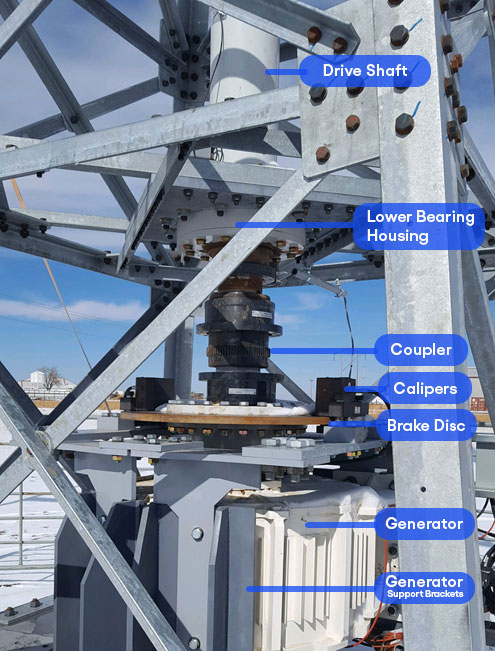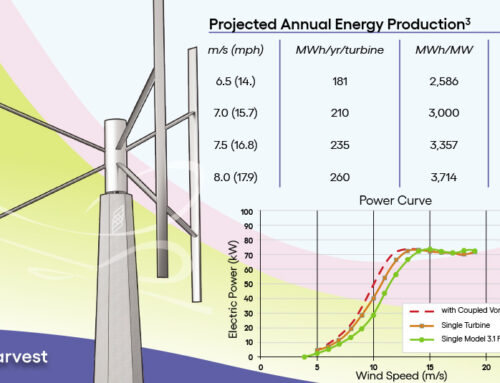Brake Modification and Testing Successful
Brake Modification and Testing Successful
 This week, Jeff Willis and Mark Chang oversaw the successful testing of our reconfigured braking system with the brake disc reinstalled above the generator and not below. With all the supply chain and COVID-related worker problems, plus the holidays and a cold Texas winter, it took almost two months after discovering the problem to solve it entirely.
This week, Jeff Willis and Mark Chang oversaw the successful testing of our reconfigured braking system with the brake disc reinstalled above the generator and not below. With all the supply chain and COVID-related worker problems, plus the holidays and a cold Texas winter, it took almost two months after discovering the problem to solve it entirely.
Our team’s solution involved moving the brake disc from below the generator to between two couplers above the generator (see photos below). The upper coupler is disengaged from the generator shaft (notice the “spline’s” exposed teeth). This allowed the “uncoupled” preliminary brake test program to be accomplished without the connected rotor. With the successful confirmation of braking, controls, and data transmission, the rotor can be connected, the tie-down lines disconnected, and the remaining tests for commissioning can proceed.
As shown in the photos, there are two hydraulic brake calipers, one on each side of the brake disc. These brakes act as our emergency backup braking system, used if the regenerative and resistor brakes fail.
With this critical task completed, the rotor will be connected to the generator on Monday. If the weather is good (not too windy), all the testing will be completed by the end of next week and the turbine should start operating 24/7.
Contact: Jen Hoover, jhoover@windharvest.com
Wind Harvest International, Inc. is a California-based renewable energy technology company, founded in 2006. The company makes, sells, and develops projects for its Wind Harvester brand of H-type turbines, the only known product designed to harvest the highly energetic, turbulent wind that blows 15-80 feet above the ground. Wind Harvest’s wholly-owned financial subsidiary Wind Harvest Pilot Project Inc. raises funds and loans it to the parent company.



